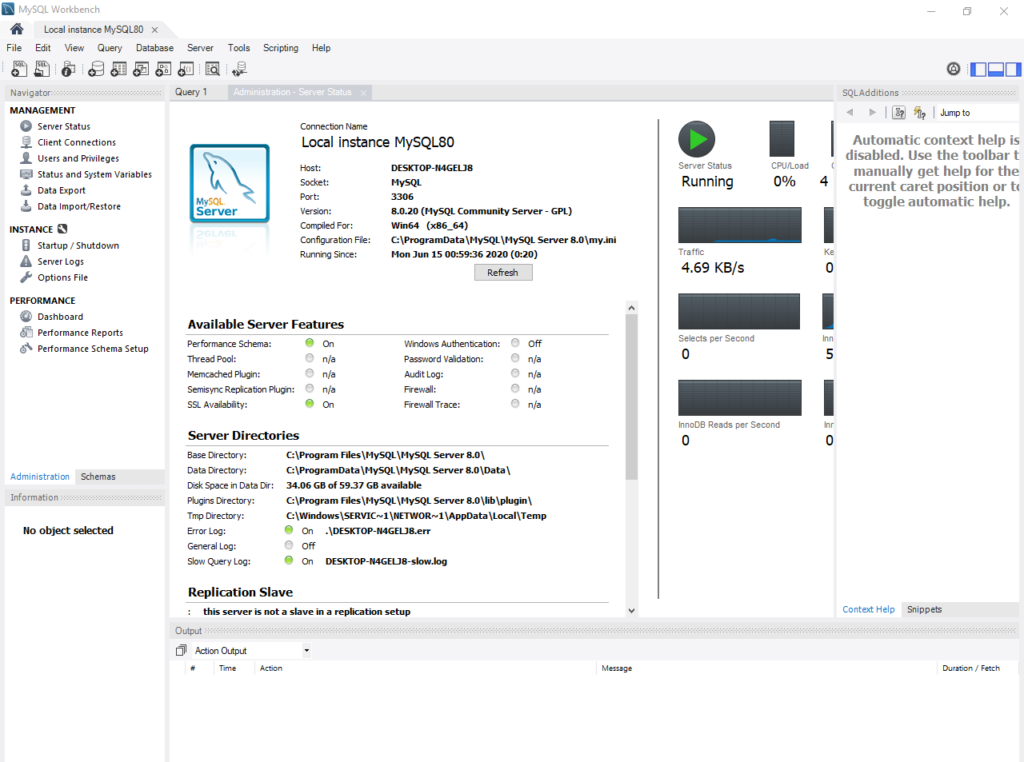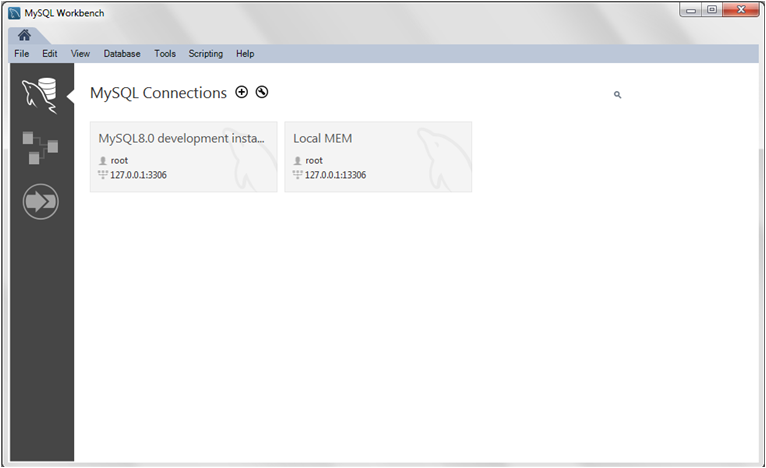

- #Mysql workbench connect to database how to
- #Mysql workbench connect to database full
- #Mysql workbench connect to database password
- #Mysql workbench connect to database download
- #Mysql workbench connect to database mac
To do, we can access the instance menu (same menu we used to SSH Access, but instead click on Rules): In order to change it, we need to modify the rules of the VM instance. By default, the databases created on Oracle Cloud cannot be accessed publicly. If we try to connect as is (Test Connection), the connection will fail.
#Mysql workbench connect to database password
MySQL Workbench provides a wizard to generate the certificate, the steps are straightforward.Ĭreate a new connect from MySQL Workbench, enter the public IP, port, username (root) and password (same password used when creating the VM instance): To connect MySQL Workbench to the Oracle Cloud database using SSL we will also need to generate a certificate.
#Mysql workbench connect to database how to
We have covered the SSH access in this post, so next we’ll see how to connect to our MySQL database on Oracle Cloud as a public database. In order to connect to the VM instance database we have two options: first one is through SSL and second one is through user/password as if it was a local database.

But since we do have UI tools available, let’s learn how to use them! Connecting to the MySQL Database - MySQL Workbench These steps are very useful to know when we don’t have any UI tools. Once we have permission, we can use command mysql and list the databases available ( list databases ):įrom here, we can run SQL queries ( use schema), create new databases, tables, run insert scripts and so on. In the terminal, change directory to the folder where the privateKey file is located and run the following command:
#Mysql workbench connect to database mac
You can use Linux or Mac terminal.įirst, we need to make sure we have read and write permissions on the privateKey file, otherwise we’ll have issues connecting to the database. Now that the SSH Access is ok, let’s connect to the database from a terminal. For this example, we will not upload a new one, we will use the one we generated previously: When we created the instance, we already created and downloaded an SSH Key.

When clicking on the SSH Access menu option, we will see a popup to Upload a new SSH Public Key from a file. By clicking on the ‘hambuguer’ menu, we can click on SSH Access:Īdditionally, in the list of instances, you can also select the SSH Access from the instance menu: First option is connecting through SSH Access. Now that the instance has been created and we explored its options, let’s connect to the database. To add more storage, the process is very similar - once you click on Yes, the service will become temporary unavailable (you might want to do this during the green zone in case this is a production database):Ĭonnecting to the MySQL Database - SSH Access To scale up and down, we can select the option Scale Up/Down option and select the new requirenments: In this example, we have one application using this database (that we will learn how to do this link in the next article).Īnd if we need to, we can also scale up and down and add storage to the database: On the bottom, we can also see all other services that are linked or using this database. On the top right corner we can start, stop, restart the service and also display monitoring information. Once the service has been created, we can click on it and we can see its overview: You will receive an email once the service is ready to be used:Įxploring the Oracle MySQL Cloud Service instance It might take up to 20-30 minutes to be created. On the Oracle MySQL Cloud Service console page we will see that the service is being created: Once completed, click on Next, review and confirm the details by clicking on Create. The wizard will automatically populate the SSH details.
#Mysql workbench connect to database download
Don’t forget to download the sshkeybundle.zip file that contains the private and public keys. If you already have an SSH Public Key, you can enter its details, otherwise, click on the Edit button and select Create a New Key and click on Enter. You will also need to configure an SSH Public Key, that can be used to login to the VM instance on which MySQL Cloud service instance is running.
#Mysql workbench connect to database full
Next, enter the details of the database (default values are already populated), such as how much compute power it is required, database administrator username and password, backup configuration (select none if you are creating an instance for testing purposes only):Ī full explanation of all fields are available in the documentation as well. You can also create tags to easily identify the database later: If you don’t have any instances created yet, click on Create Instance button:Įnter the instance name and choose the compute region. The link looks like: Ĭlick on the menu icon -> Services.


 0 kommentar(er)
0 kommentar(er)
